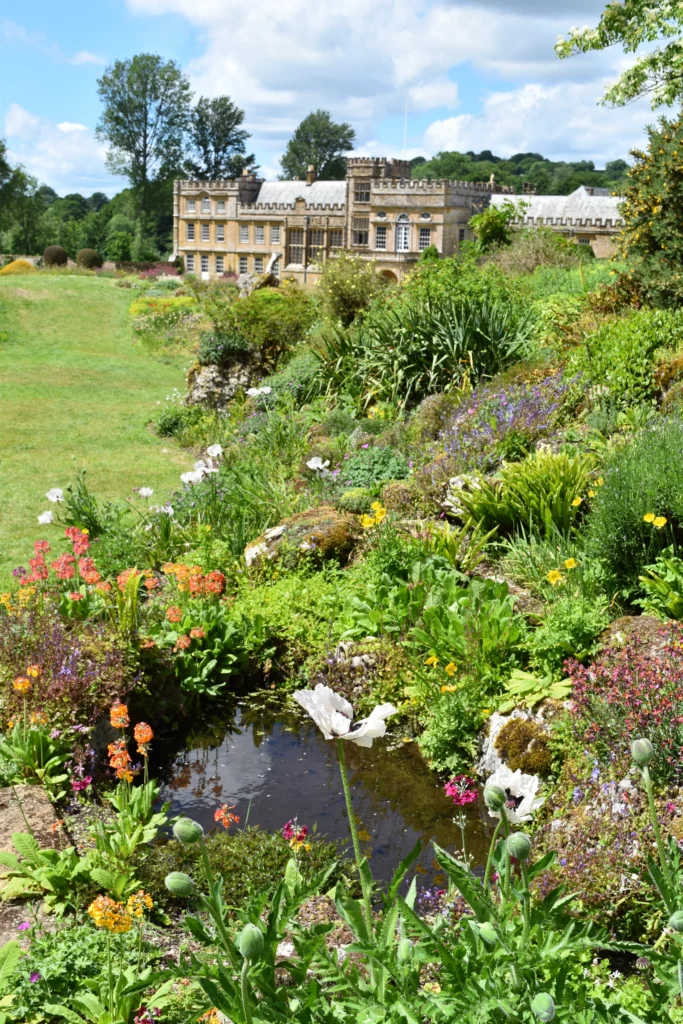
Forde Abbey, Somerset, England
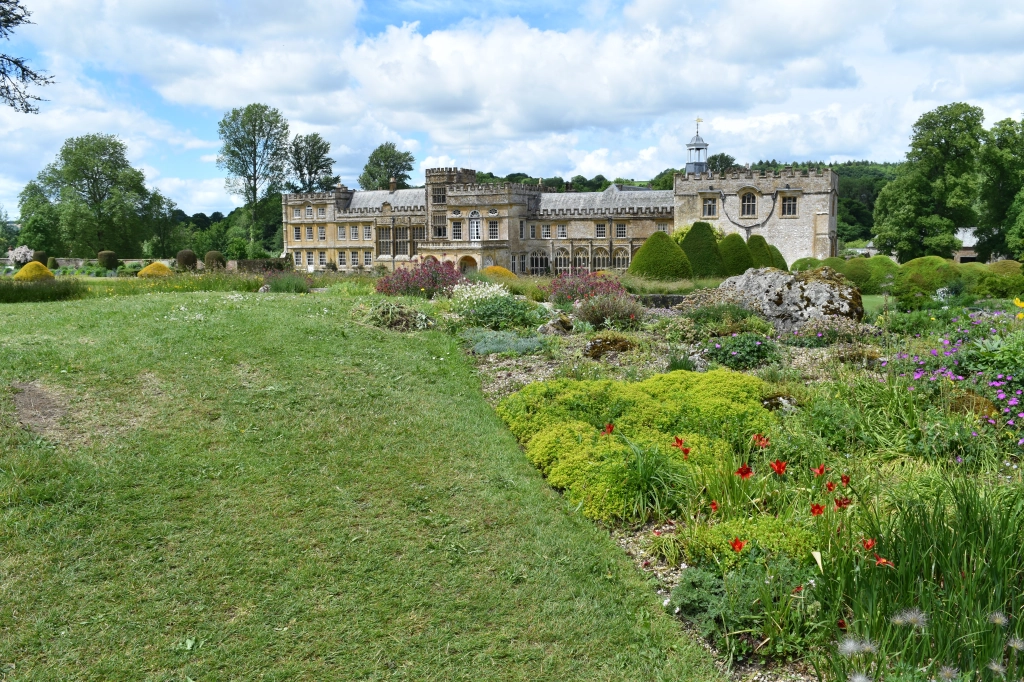
Forde Abbey and Gardens in the southern county of Somerset was founded by monks over 800 years ago.
It is easy to get overwhelmed when visiting a garden. There are scents, sounds, and visual experiences to take in and process. In this next series of blogs I will take images from some English gardens and explain how I walk around a garden and what I notice. These ideas will be random and include design, plants, and experiences.
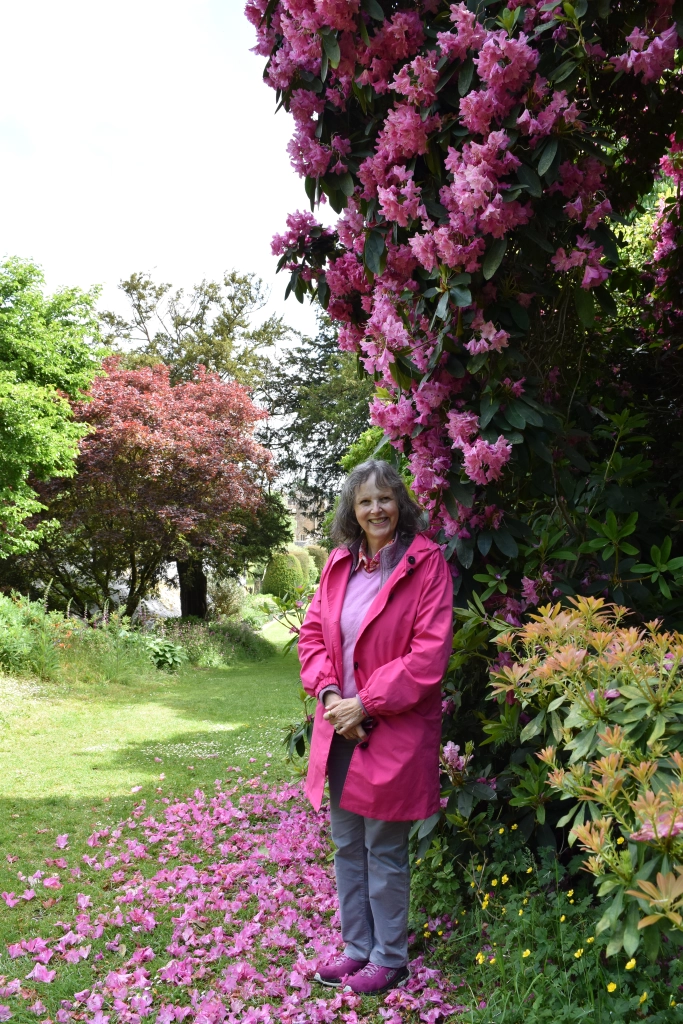
Jenny Rose Carey – In the Pink at Forde Abbey with a matching pink rhododendron.
Forde Abbey is the first English garden to be virtually explored in this series.
The first major building at Forde Abbey was a monastery situated next to the River Axe and facing south. After King Henry VIII dissolved the monasteries in 1539, it was neglected for over a century. In the 1660’s the house was redeveloped. Since then the extensive gardens have been designed, planted, and cared for. There are 30 acres to explore that are nestled into the picturesque Somerset countryside.
Love it or Hate it? – The Controversial White Bench

A long white bench is an inviting place to rest your legs.
After a while of walking I looked for a place to sit and think about what I had seen so far. There was a convenient long, white bench that was backed by an old wall. The day was pleasant but a little chilly. The wall sheltered me and the surrounding plants from the wind and created a little microclimate. The view from the bench was along the green walk and across it to the dense planting around the Long Pond.
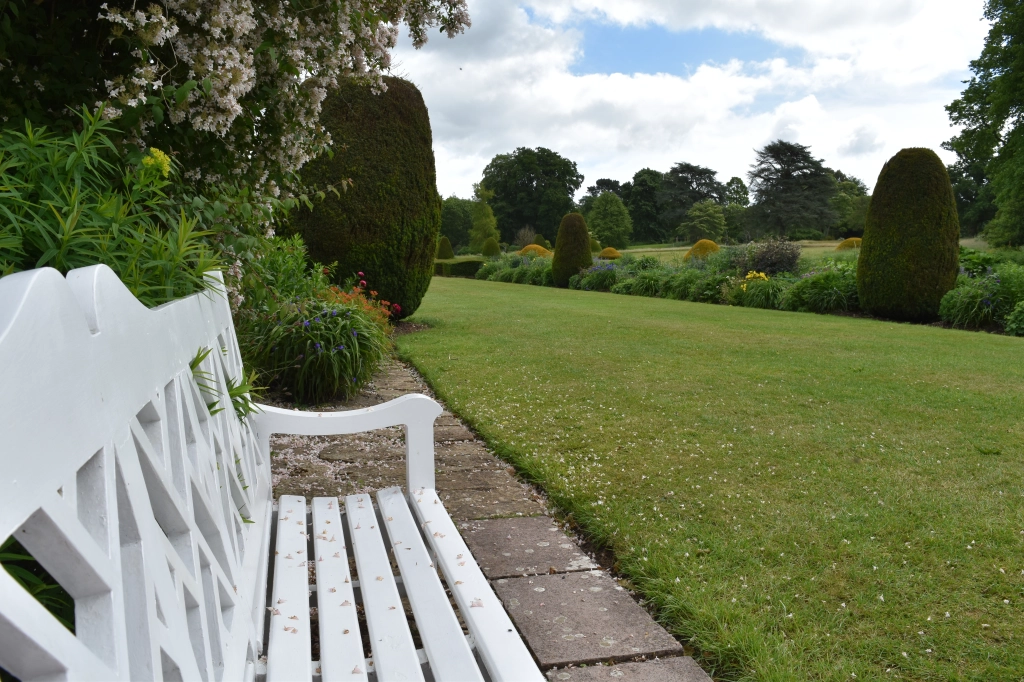
From the bench there is a lovely view along the long grass walk.
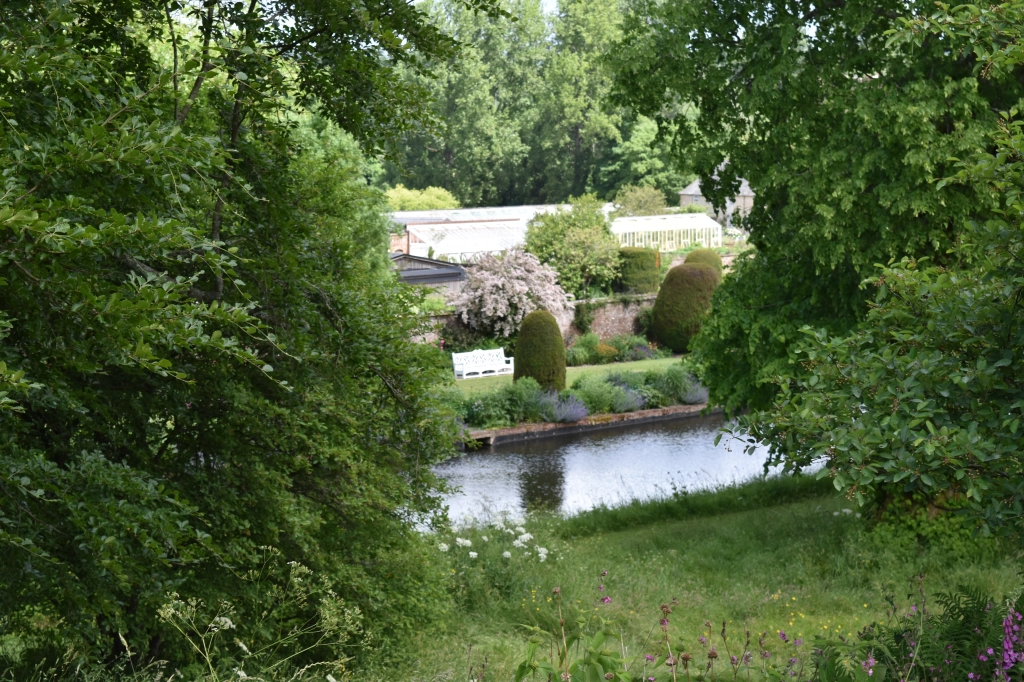
The bench can still be seen from the hill above. White is a controversial bench color. Some people love its classic, cool, good looks, while others feel that it stands out too much in a garden. What do you think?
I continued my walk up the grass walk and later I realized that I could see my bench from above. It was a nice surprise and put the bench in context with the rest of the garden. The funny thing about benches is that they need to be attractive enough to get you to sit on them and then comfortable, but they are also a wonderful focal point from further away.
Think about places to sit in your own garden and whether they need to be moved to be more useful or as a focal point to draw you to sit on them and contemplate your own space.
Water Adds so Much Life to a Garden
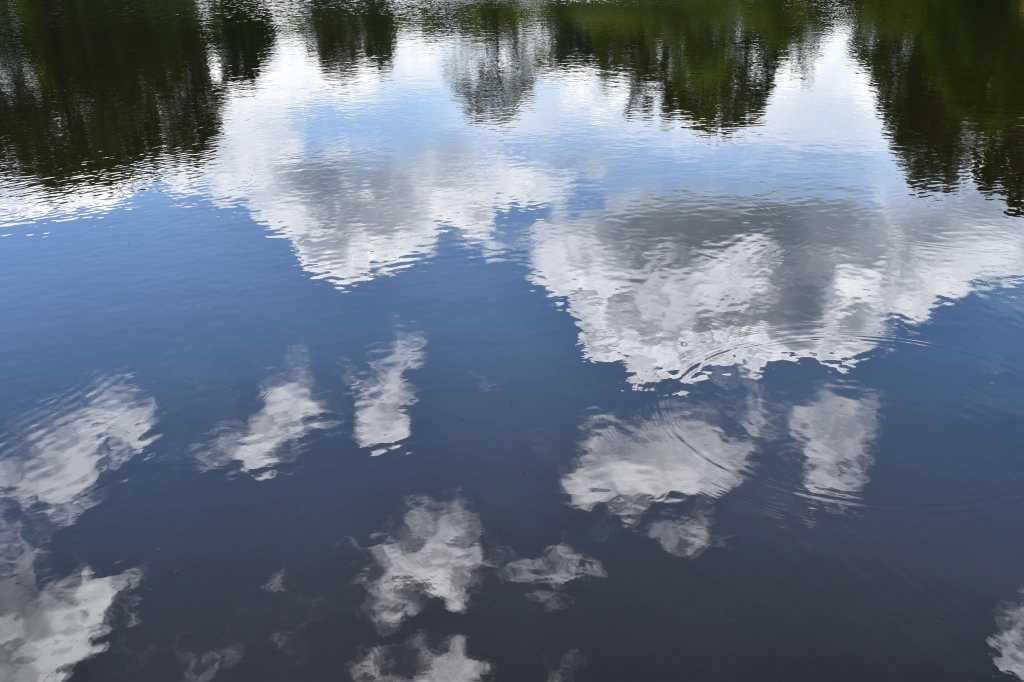
Water was a motif at Forde Abbey that was shown to advantage in various guises. There were lovely reflections in the Great Pond that dates from the time of the Monastery. It was probably stocked with fish for eating.
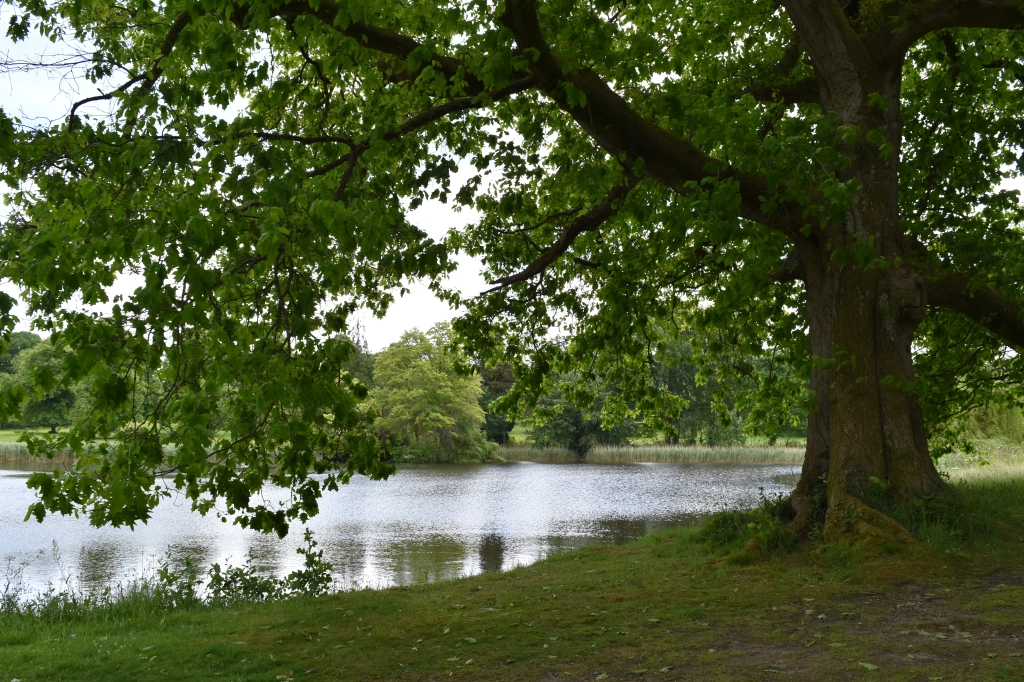
A North American Red Oak hangs over the Great Pond. The trees at Forde Abbey are old and magnificent.
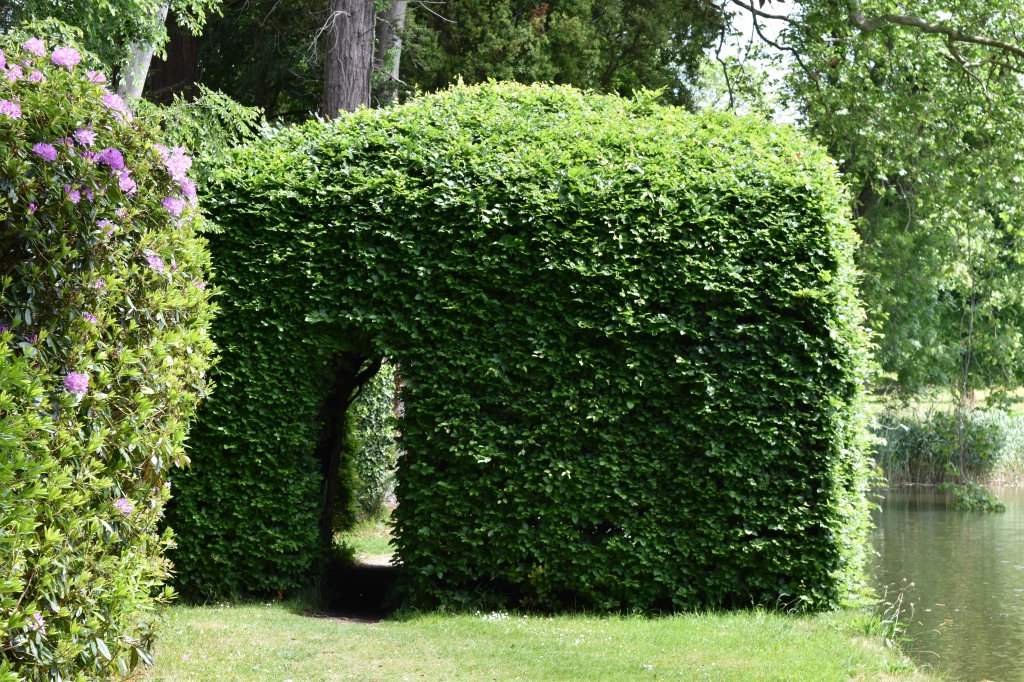
Also by the Great Pond this fun house-like structure made of Beech trees.
Some of the water features where added during the 18th Century craze for the picturesque in gardens. Apparently the cascades and ‘chain of ponds’ were an early example of this trend.
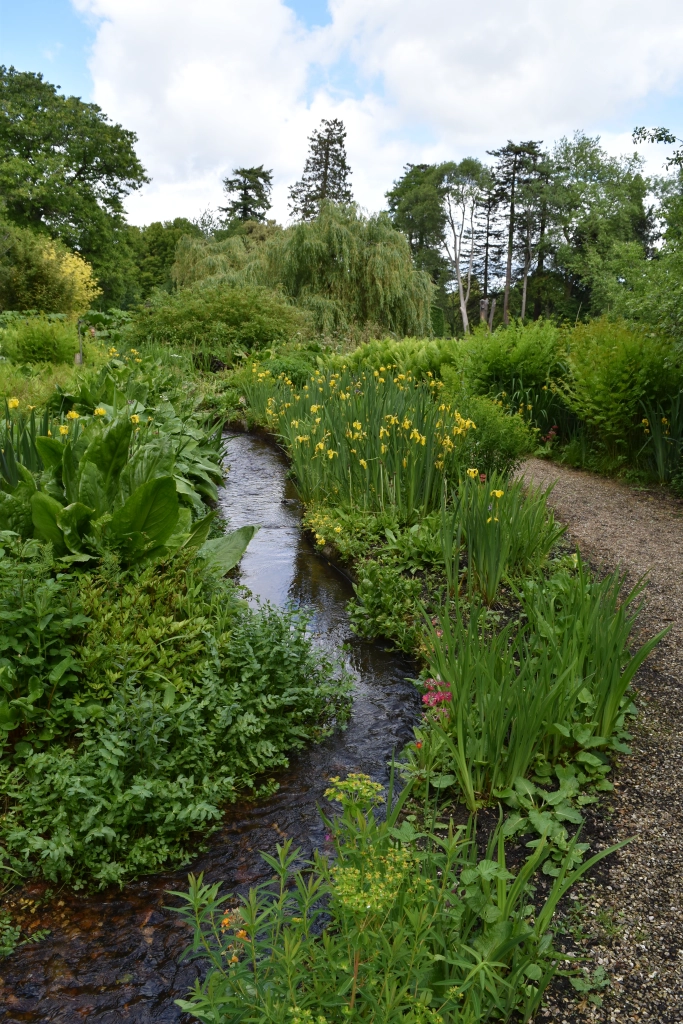
Running water and soggy soil for wet-loving plants in The Bog Garden.
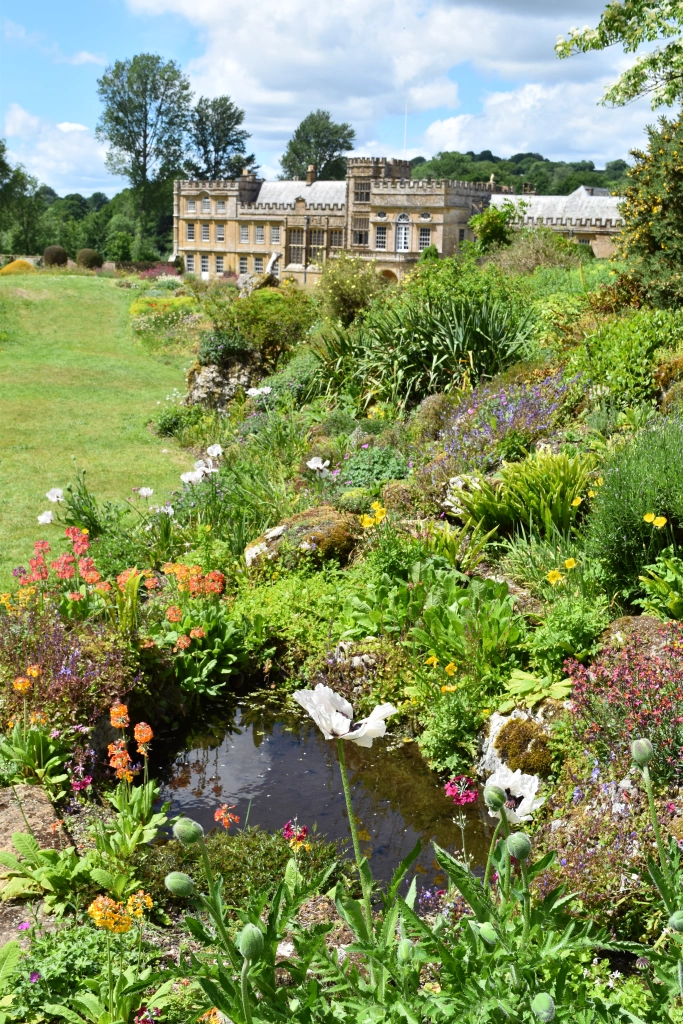
The water feature in The Rock Garden is surrounded by multicolored candelabra primulas.
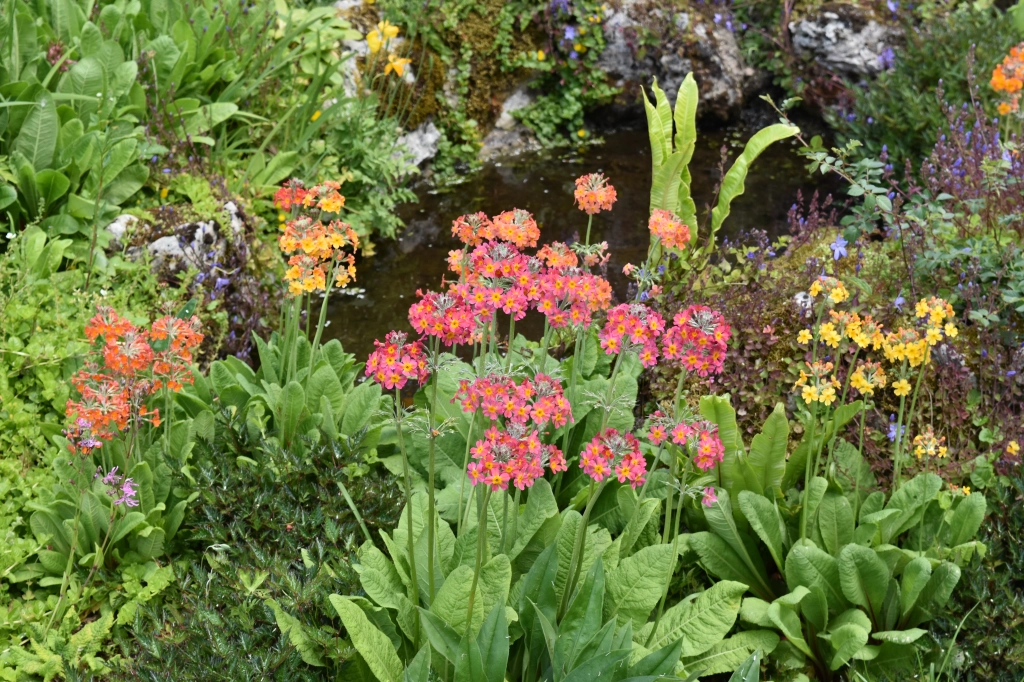
Candelabra primulas do best in moist soil and love the cool British summers.
A Few of My Favorite Plants at Forde Abbey
As we wrap up the tour of Forde Abbey here are a few plants that I loved on my visit.
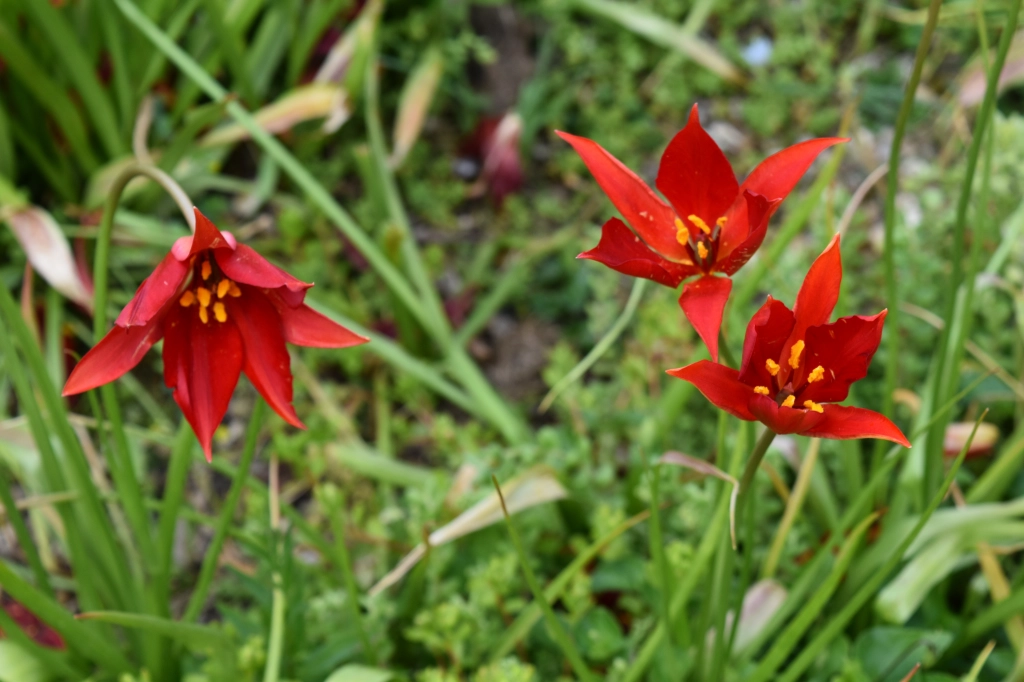
Tulipa sprengeri is the last species tulip to bloom. I would love to be able to grow this bright red Turkish jewel. Does anyone have a North American seed source?
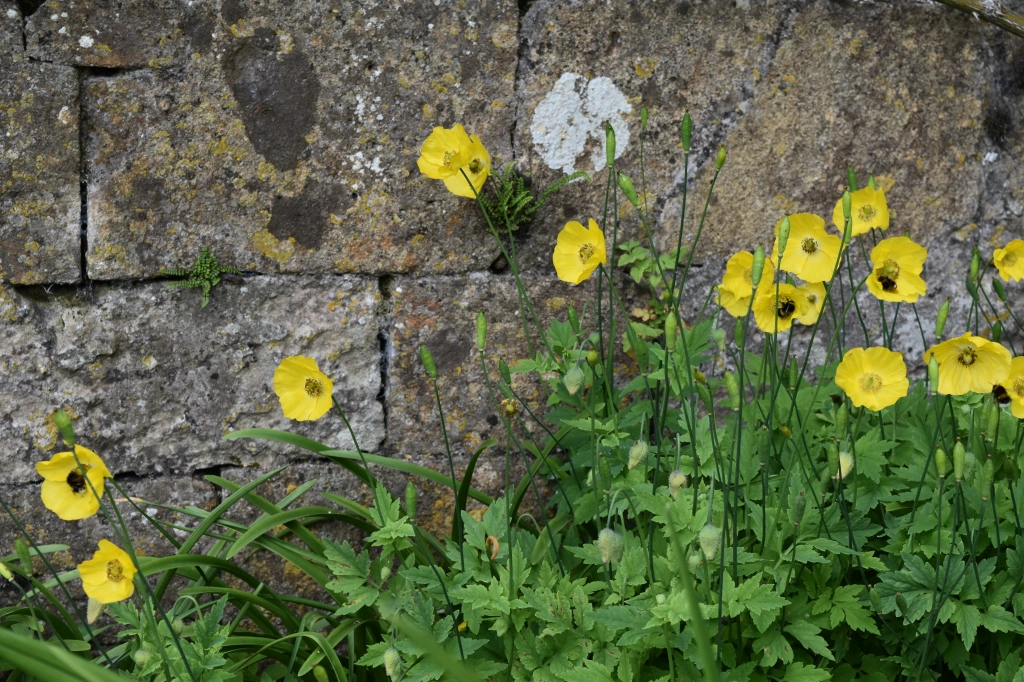
The Welsh Poppy, Papaver cambricum, is a favorite of mine. At Forde Abbey it casually seeds itself in front of an ancient stone wall – just waiting to be photographed.
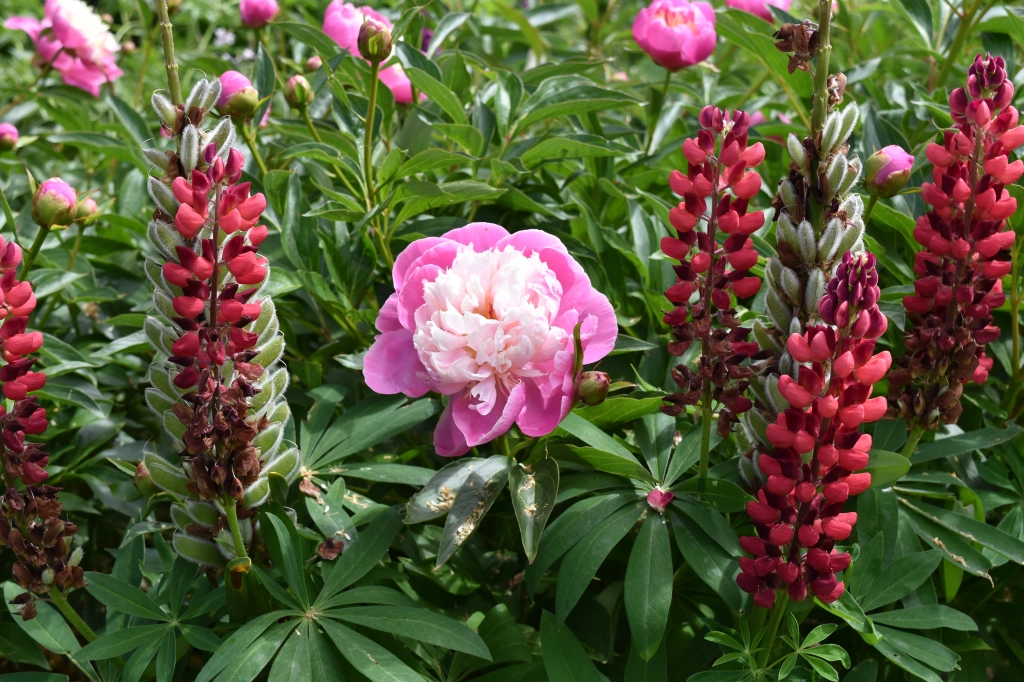
Sometimes combinations take you by surprise. Here the upright stems of the red lupins look amazing blooming at the same time and in the same bed as a pink and white bowl-shaped peony. The difference in shapes paired with the way that the dark stems of the Peonies pick up the color of the lupin flower really made this combination pop.
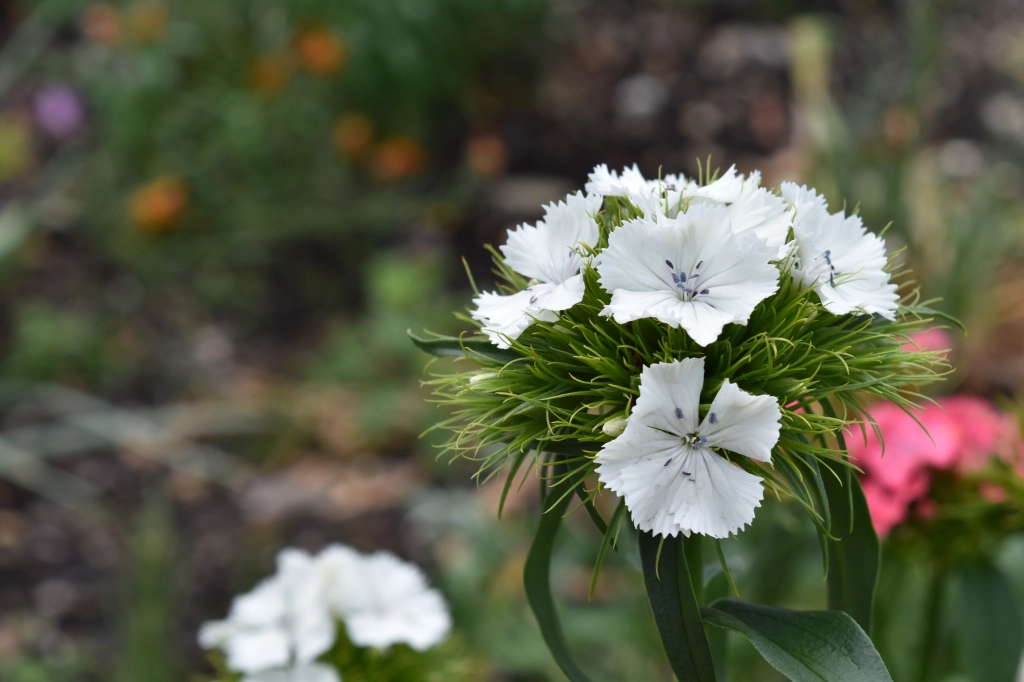
Sweet William, Dianthus barbatus, that lived up to its name and was fragrant. So many of the ones that we grow in America are not fragrant. Now I am on a mission to find seed for a really scented Sweet William or two.
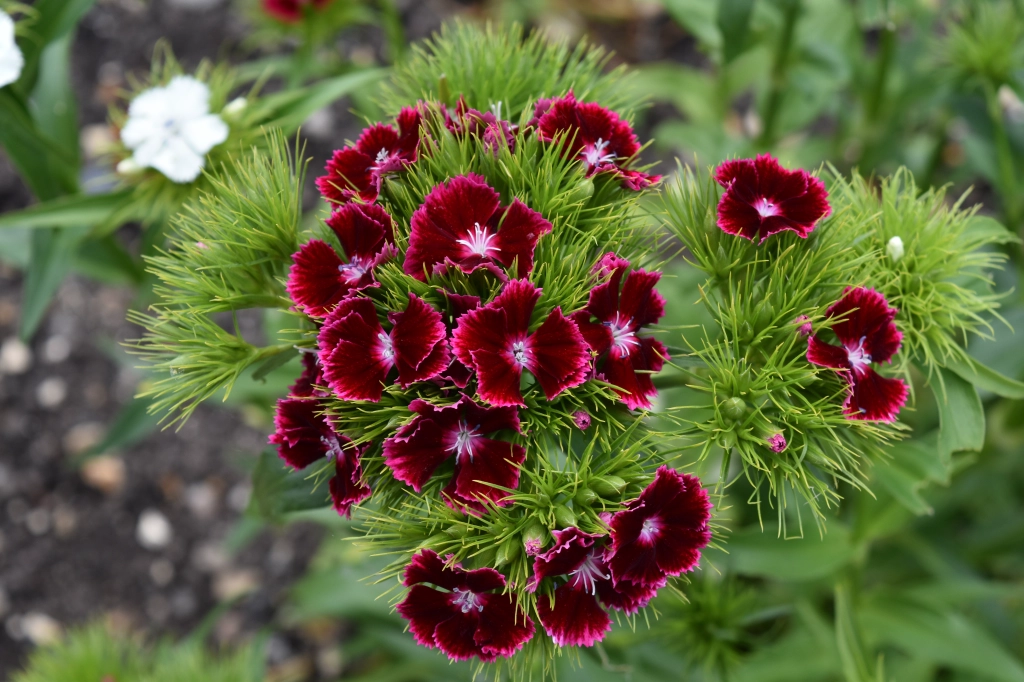
I smelled every color of Sweet William and they were all fragrant!
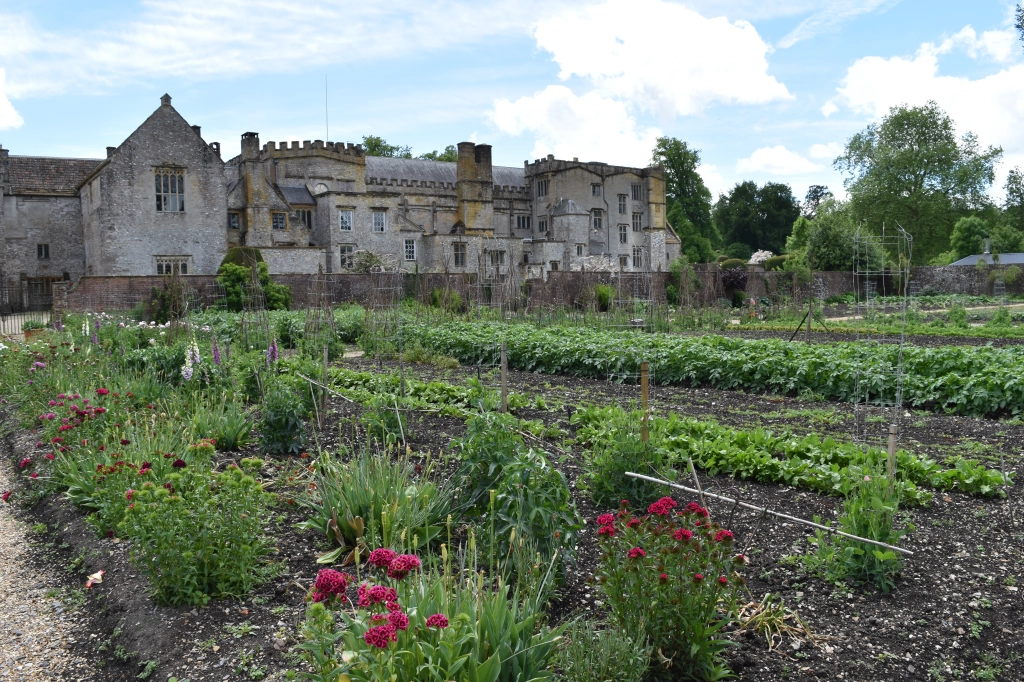
The back of Forde Abbey overlooking the Kitchen Garden. The row of scented Sweet William is along the left.
The day was rounded out with refreshments in the cafe – a delicious garden-grown beetroot and thyme risotto went down a treat – plus the color was a rich magenta pink.
Happy Garden Visiting Gardening Friends. Please comment if there are gardens that you would like to hear about. Cheers, Jenny Rose Carey




Leave a Reply